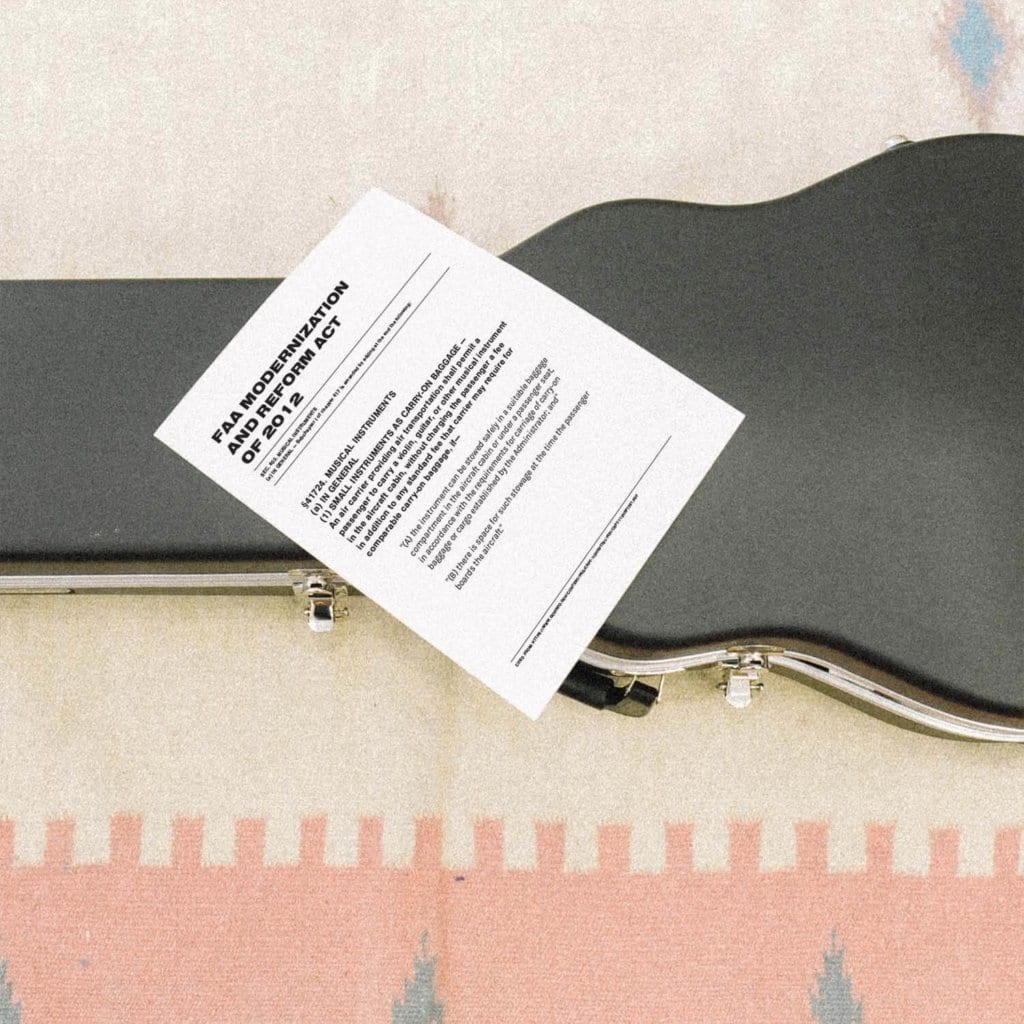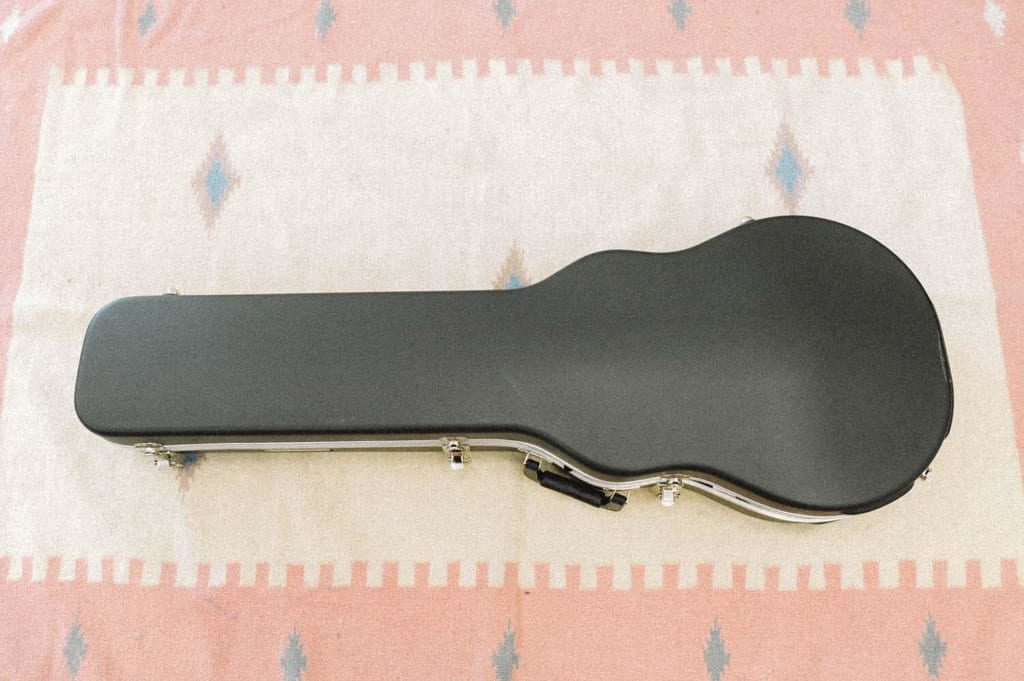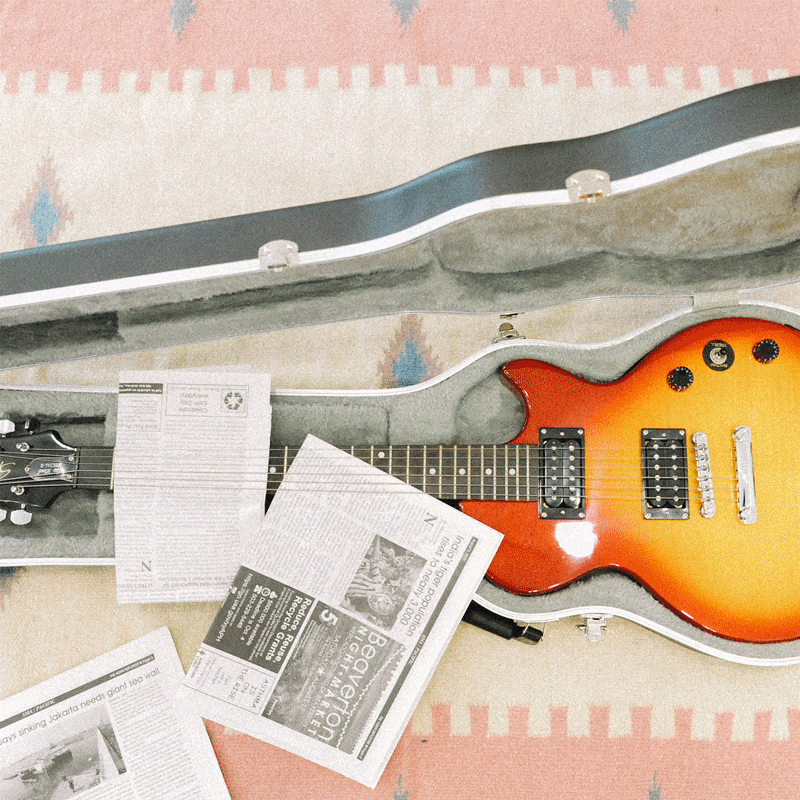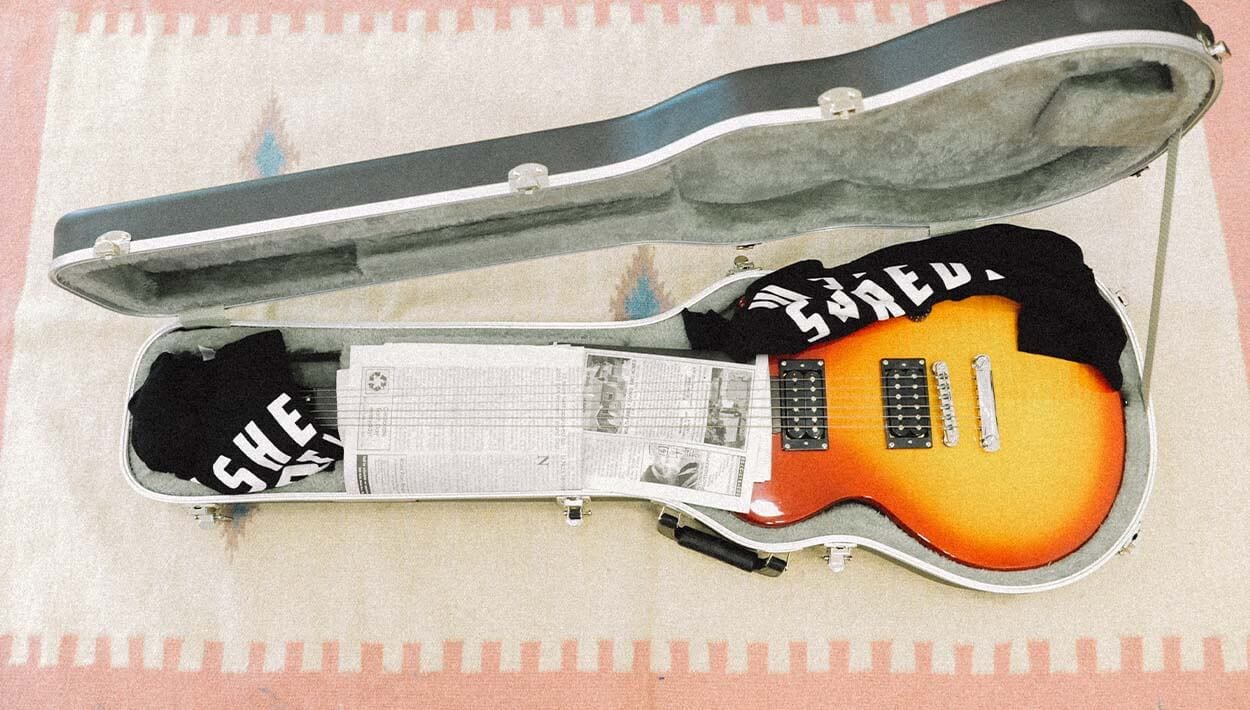Flying with a Guitar: Everything You Need to Know
From learning your rights, to airline policies, to packing—we’ve laid out the most crucial to-knows for flying with a guitar in the United States.
Chances are, you’ve seen a headline or watched a video which perfectly embodies one of your worst fears (see: “United Breaks Guitar.”) Every musician who’s ever even thought about flying with a guitar has had anxiety about all the things you can’t control when traveling with your instrument. After all, when you fly, you’re putting your guitar in the airlines’ hands.
The truth is, you have rights when flying with a guitar. There are steps you can take to minimize the likelihood that you’re going to need to beeline to a repair shop when you land.
Know Your Rights
Your best bargaining chip when it comes to flying with a guitar is knowing your rights. And yes, you do have real-deal legal rights when flying with a guitar in the United States (flying abroad is a different story). Per the FAA Modernization and Reform Act of 2012 (thanks, Obama!), airlines have to let you bring your guitar on board as a carry on if it fits in a closet or in an overhead bin when you board.

Here’s that exact text:
An air carrier providing air transportation shall permit a passenger to carry a violin, guitar, or other musical instrument in the aircraft cabin, without charging the passenger a fee in addition to any standard fee that carrier may require for comparable carry-on baggage, if—
‘‘(A) the instrument can be stowed safely in a suitable baggage compartment in the aircraft cabin or under a passenger seat, in accordance with the requirements for carriage of carry-on baggage or cargo established by the Administrator; and
‘‘(B) there is space for such stowage at the time the passenger boards the aircraft.
Point B is pretty key in terms of function. If you’re last to board on a full flight and the airline is gate-checking every bag in your boarding group, the odds are lower that your guitar is going to fly in the main cabin with you. If that’s the case, your best bet is to politely plea with the flight attendants to keep your guitar in one of the on-board closets that are usually reserved for coats.
There are plenty of things you can do to ensure a better boarding position (and thus get on the plane when there’s more overhead space available), usually for an added fee.
If you’re flying Southwest, you can pay an extra $15 in advance or $30-60 at the gate to get a better boarding number. For other airlines, upgrading to “premium” seats or an exit row seat will get you a better boarding position. Some airlines board by row, so reserving a seat that gets boarded sooner (for example, Alaska Airlines boards the back half of the plane first) can increase your odds of fitting your guitar on the plane.
You might want to even consider committing to one airline, and even getting a credit card with one. Airlines tend to reward their frequent customers, sometimes in the form of a better boarding number.
One last thing about knowing your rights: just because you know the law doesn’t mean the people working at the airport will. They can’t possibly know every single policy off the top of their heads, so we highly recommend printing off a few copies of the law or the policy as listed on their website to show employees at the airport if they try to get you to check your guitar at check-in (we know a few people who have laminated copies in each of their cases and gig bags). Be polite, but firm.
Know Your Airline’s Policy
Although every airline that operates in the United States has to follow the law, different airlines sometimes have slightly different policies.
Possibly due to some negative press, the United Airlines guitar policy requires your instrument be in a hard case rather than a gig bag, even a reinforced one like the Mono 80, as does the JetBlue guitar policy. The Southwest Airlines guitar policy doesn’t require a hard case, but it does stipulate that if you do use a soft case or gig bag, they’re not liable for damages to your guitar.
The American Airlines musical instrument policy doesn’t have this stipulation, and neither does the Alaska Airlines guitar policy, the Spirit Airlines guitar policy, nor the Delta guitar policy (though they do highly recommend a hard case). The Air Canada guitar policy allows those flying with musical instruments to board in advance of general boarding if you’re there early enough.
Some airlines encourage you to buy a seat for larger instruments, sometimes at a discount. Air Canada offers 50% off regular fares, and American offers seats at the child rate or less. This normally applies to much larger instruments, i.e. a guitar that would not fit in an overhead compartment (such as one on a smaller plane) or a double bass.
[table id=5 /]
Know Your Plane
We’ve already talked about the importance of boarding early and knowing your specific airline’s rules, but it’s also important to know what plane you’re flying on for one big reason: overhead bin space.
Typically, your boarding pass or reservation will have your plane type on it. Be aware that this can change, so check again the day of your flight to make sure your case will still fit in your overhead bin.
While most airlines don’t publish exact information on their overhead bin space, you will be able to see if you’re flying on a Dreamliner or a prop plane. The bigger the plane, the more likely it is you’ll be able to fit your guitar. If you’re on a smaller plane, the odds are lower. After all, some prop planes can’t even accommodate a roller bag in their overhead compartments.
Pack with Care
Even if you manage to bring your guitar onto the plane with you, you’re going to need to pack your guitar with care.
You typically have three case options for planes: a true guitar flight case, a standard hard case, and a reinforced gig bag. Though we’d respect the optimism of someone traveling with a standard gig bag, we wouldn’t recommend it.
First things first: your airline might require you to use a hard case. Check above to see which airlines those are.
Flight cases are virtually indestructible, but can be expensive. When we’re talking about flight cases or road cases, what we mostly mean are cases molded to fit your instrument and are made of a mix of metal and wood (and sometimes plastic or fiberglass).
A standard hard case is more economical (and might have even come with your guitar) but offer a little less protection. And not all hard cases are created equal—if you have an old cardboard case for your acoustic, you might as well not have a case at all. Most electrics come with hard cases that are made of wood or plastic, and some are even molded to fit your guitar specifically, but aren’t reinforced the same way that flight cases are.

Some brands offer what’s called “TSA-Approved” hard cases and flight cases. This doesn’t mean that the TSA can guarantee that your guitar will survive a flight, it just means that it’s a TSA-Approved lock. Federal guidelines require bags only be locked with approved locks in case a TSA agent needs to look inside your bag (or in this case, case).
Now let’s talk about reinforced gig bags. These aren’t reinforced the same way flight cases or hard cases are, but it does mean the sides have a little more structure to them. The biggest benefit of gig bags is that they’re easier to carry in the airport, and they’re probably easier to fit in an overhead bin, but they offer less protection than a hard or flight case.
There are theories about flight crews taking mercy on you and your poor, underprotected instrument, but this is an enormous risk to take. We wouldn’t recommend it at all for instruments that are known for having weaker headstocks, or an acoustic.
How To Pack Your Guitar
- Loosen the strings just enough to get a little slack
- Place some newspaper between the strings and the fretboard
- Wrap the headstock, neck, and heel in fabric or packing paper (pro-tip: if you use t-shirts, you can wear them at your destination)
- If your case isn’t molded, fill in any extra space in the case so the guitar can’t move around
- Include your contact information in case you get separated from your guitar (both a tag on the outside and a card inside)

Putting your guitar into someone else’s hands is inherently stressful, but the truth is that people fly every day without catastrophic consequences. You can’t ever guarantee that you’ll have a perfect flight with your guitar, but knowing your rights, paying for a little upgrade if you can, and taking precaution with your instrument can help your odds.














Comments
[…] Emily’s excited to be featured on the She Shreds Magazine website again, this time for a topic covered way back in one of the first episodes of the podcast — flying with a guitar! […]
Pingback by Flying with a Guitar: Emily's Newest She Shreds Article - Get Offset - The Guitar Podcast on August 14, 2019 at 1:25 pmThanks, this is helpful advice.
One editing oversight:
“The biggest benefit of gig bags is that they’re easier to carry in the airport, and they’re probably easier to fit in an overhead bin, but they offer less protection than a gig bag or flight case.”
I think you meant to say that an gig bag offers less protection than an /instrument case/ or a flight case.
Comment by J Donald on August 16, 2019 at 6:57 amThank you for this post!
Comment by Felice on February 9, 2020 at 1:54 pmPlease let me know if you’re looking for a author for your
Comment by g of on June 19, 2020 at 8:12 pmblog. You have some really great articles and I
believe I would be a good asset. If you ever want to take
some of the load off, I’d love to write some material for your blog
in exchange for a link back to mine. Please shoot me an email if interested.
Thank you!
[…] ↑ https://sheshreds.com/flying-with-a-guitar/ […]
Pingback by How to Take Your Guitar on a Plane - CYBERDE on December 16, 2020 at 4:05 pm[…] ↑ https://sheshreds.com/flying-with-a-guitar/ […]
Pingback by How to Take Your Guitar on a Plane - Road2Info on December 16, 2020 at 5:08 pm[…] ↑ https://sheshreds.com/flying-with-a-guitar/ […]
Pingback by How to Take Your Guitar on a Plane – News by Droolin' Dog on December 16, 2020 at 5:16 pmFlying with a guitar can be a bit tricky, considering airline rules and safety concerns for the instrument. Check the airline’s policies on carrying musical instruments. You could also consider buying a seat for your guitar or shipping it. After securing your guitar’s journey, enhance your overall travel experience with secret food tours naples at your destination, a harmonious way to explore local music and culinary scene
Comment by Marcus Fernandez on November 8, 2023 at 7:51 am